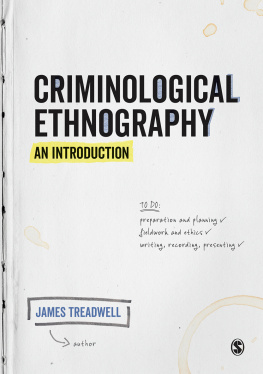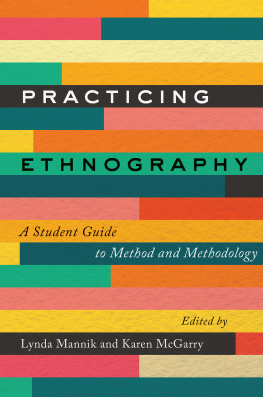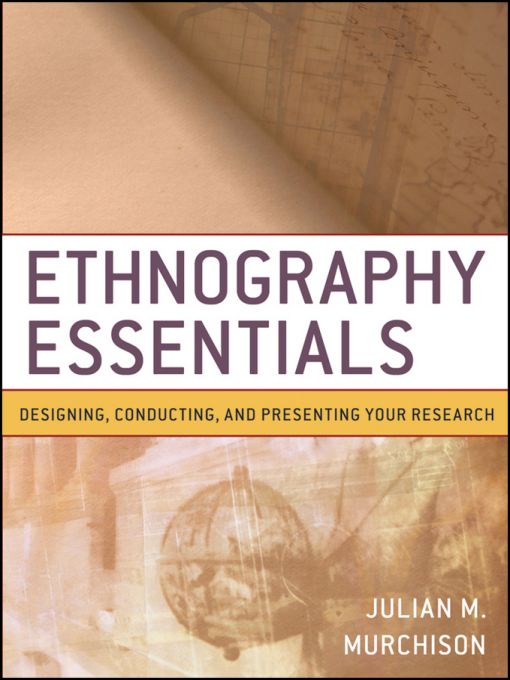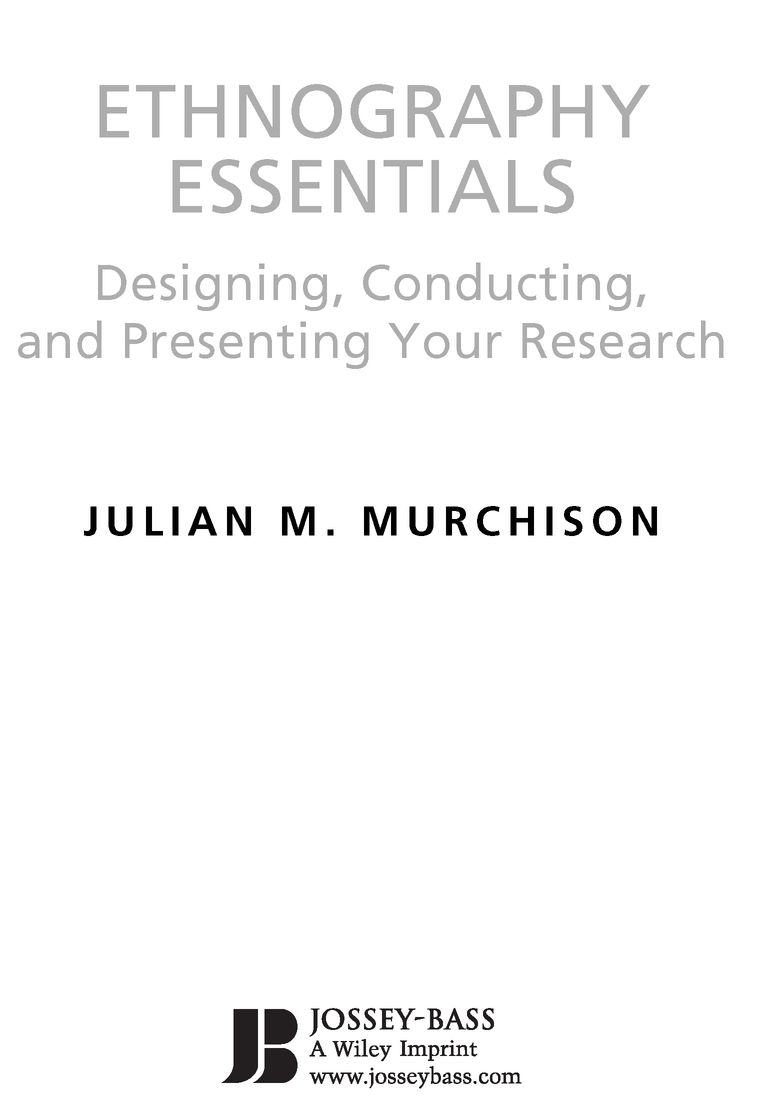Table of Contents
PREFACE
This book aims to guide the relatively new ethnographer through the research process step by step. Advanced undergraduate students in anthropology, sociology, education, and related fields that employ ethnography will appreciate this text, and it could also prove useful to undergraduate students at the introductory level, more advanced students who want a practical guide to doing research, and even practitioners of ethnography in organizations and institutions outside of academics. The book starts from the premise that you will be engaged in your own ethnographic research over the course of a semester or a similar time period. Some projects may be slightly more concentrated in duration, and some projects may last a year or longer. The same basic principles apply in either case.
The book assumes relatively little prior exposure to ethnography, though previous experience in reading ethnographies or even doing ethnographic research is always a plus. With this working assumption, the book starts at step one in the research process and walks the reader through the entire project in a mostly chronological fashion. Readers who bring some experience with ethnography to the book may find that some sections provide a sort of review. Such a review can help those readers in evaluating their own thoughts about ethnography.
The book was written to maximize usefulness and accessibility. You will find important ideas and concepts (often highlighted as key terms) throughout the text. However, you should find very little jargon or highly specialized terminology. I have aimed to cover important and complex ideas and issues in as simple and straightforward a manner as possible. When the ideas and issues can be covered in relatively plain language, I have preferred that approach over the language used in texts on ethnographic methods intended for a more advanced and specialized audience.
The reader of this book should find the tools and the space to pursue various ethnographic projects. As a research strategy, ethnography encompasses a lot of different approaches and assumptions. There are even fundamental disagreements about what ethnography is or should be. I have aimed to address key questions and critiques that arise in discussions of ethnography without getting sidetracked by topics that will prevent you from completing your task in a relatively straightforward and effective way. Along these lines, I explain why the use of terms like informant and field can be the subject of significant debate, but I choose to use these terms because you will frequently encounter them elsewhere and they make discussion of certain topics, methods, and strategies easier. I expect that you will come to use these terms with some awareness of their multiple layers of meaning and that you will be part of the next generation of ethnographers who will help the research strategy evolve and overcome some of its limitations.
In producing this guide for the ethnographic endeavor, I want to allow, and even encourage, students and other readers to explore multiple possibilities in conducting ethnography. Therefore, the text is intended to include multiple approaches under the umbrella of ethnography. For example, your individual approach may be decidedly scientific or intentionally subjective. Either way, you should find useful information for your work in the text. At times, in order to allow for this multiplicity of approaches, the text has to include multiple possible scenarios and multiple options for you. In these instances, you have to decide for yourself the approach that seems most suitable for you and your research. I have provided suggestions and criteria for making those decisions and emphasized the ways in which decisions and strategies related to research strategies, methods of data collection, and analysis are interrelated.
The topic of ethics is not confined exclusively to the final chapter or an appendix. Ethical issues arise throughout the text. This regular treatment of ethics should help you understand the importance of ethical considerations and the manner in which all ethnographers grapple with and address the issues. The book aims to give you a sense of the underlying ethical questions that ethnography raises and the practical steps that ethnographers take to address ethical concerns.
THE BASIS FOR THIS BOOK
There are a number of good books out there that examine ethnography as a whole or one of its component parts. Relatively few of these books are geared toward an undergraduate audience, and many of them are theoretical rather than practical in focus. Those books that are both practical and accessible to the undergraduate tend to assume a rather narrow sort of project or present a series of separate ethnographic exercises. Therefore, this text assumes that you benefit from designing and carrying out a particular project that employs a combination of methods.
A copy of the syllabus for a course called Ethnographic Research and Writing started the conversation between the publisher and me that ultimately led to this book. I have taught that course on two different occasions. Students in the most recent class read drafts of many of the chapters contained in the final book. Like the book, that course is designed around a semester-long ethnographic research project. Students are expected to choose their own topics and devote considerable time to the project throughout the course of the semester. The class considers the nuts and bolts of ethnographic methods, the strength and limitations of ethnography, and the writing process. There is a strong commitment to the idea of ethnography as writing. Work by the student and the instructor is presented and critiqued in a workshop format that requires the students to write and revise throughout the process. This book reflects that commitment to ethnography as writing intensive. While the ultimate focus is on producing a final written ethnography, this book focuses also on the processual writing that happens in the course of writing from start to finish. Ethnographers write to record information, and they write as a way of analyzing the data they collect. If they are aware of the centrality of writing to the process, they can use writing to their best advantage as researchers and analysts.
This book generally assumes that the final ethnography will be a written ethnography. Many of the principles and methods discussed here also apply to ethnographic film and to other media, but writing ethnography includes its own unique opportunities and challenges, and these are the focus of this book.
Much of the content in the book is based directly or indirectly on my teaching experiences in a number of classes that involve ethnography. From students in Introduction to Anthropology who write a short ethnography to honors students who are writing ethnographic theses of a hundred pages or more, some of the concerns and questions are strikingly similar. The text aims to address as many of these concerns and questions as possible and tries not to make unwarranted assumptions about knowledge or experience.
ORGANIZATION OF THIS BOOK
The book is basically organized chronologically, starting with choosing a research topic and developing research design, then proceeding to consider the practice of ethnography in terms of note taking and specific methods, and finishing with a focus on the writing process that produces a final ethnography. Almost all ethnographies follow this basic progression in one form or another. The chapter on analyzing along the way, though, shows that data collection and analysis should be linked rather than separated. Therefore, embedded in the organization and thoughts about chronology you will find an important idea about connections between different stages of research.








